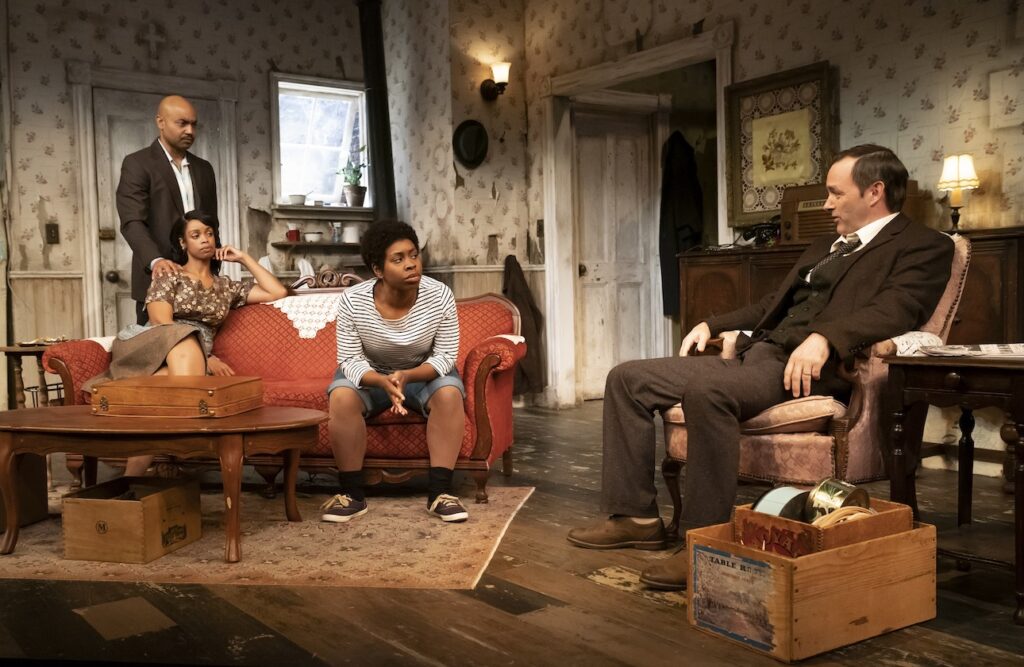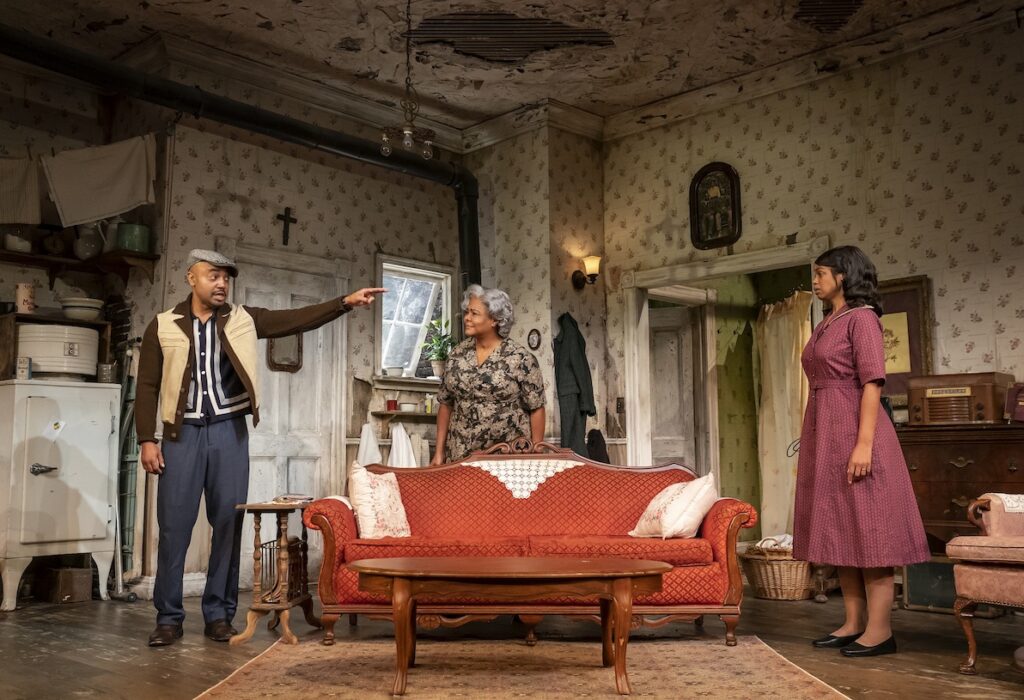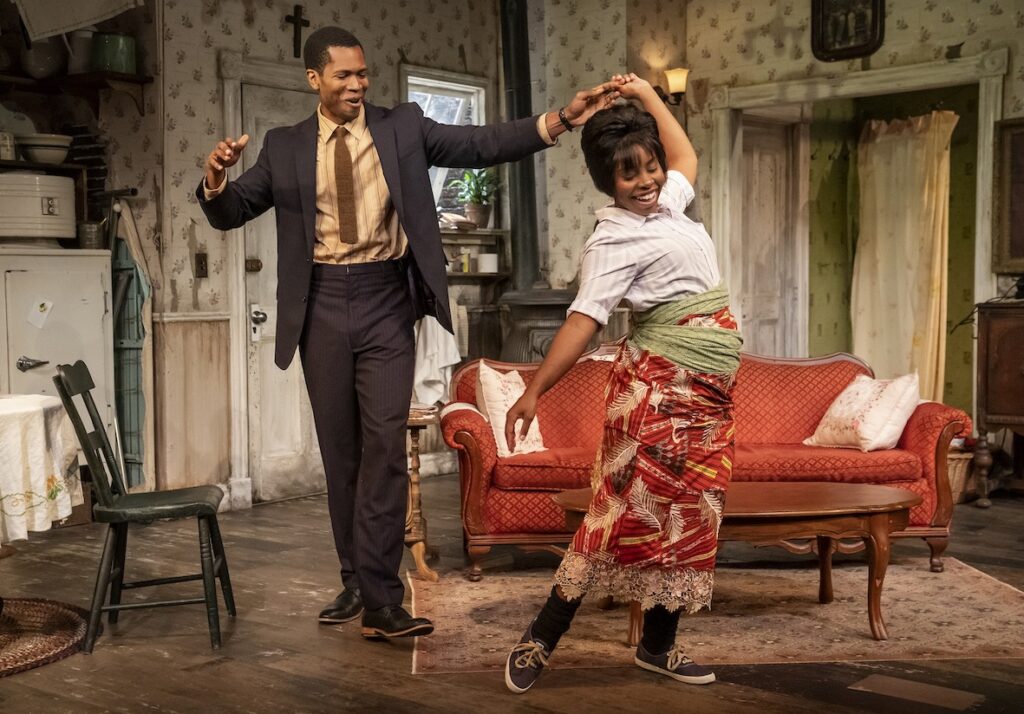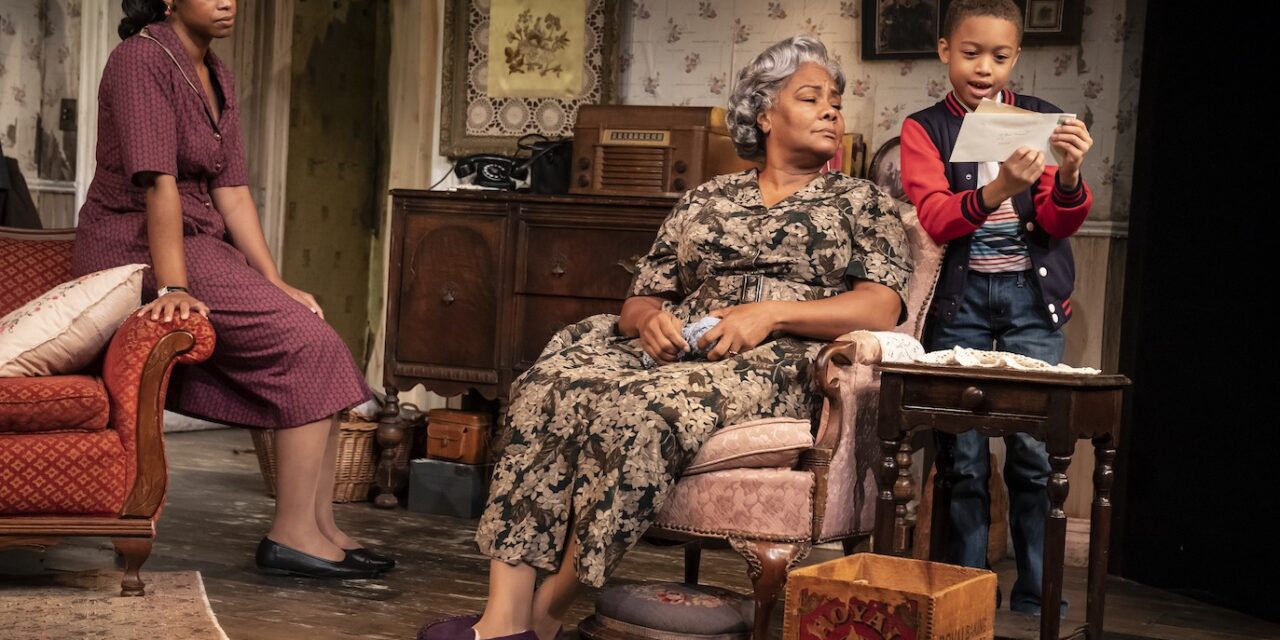By Carol Rocamora . . .
I don’t know how you feel about the classics, but I say: treat them with reverence and respect. It’s one thing if you want to dress them in modern clothes, but if you want to change the text and the tone, tread carefully. Such bold acts may lead to where angels fear to tread.
Such is the case with Lorraine Hansberry’s A Raisin in the Sun, her 1959 jewel that enjoys a hallowed place in the American theatre. It is now receiving a riveting revival at the Public Theatre, and under Robert O’Hara’s vigorous direction, it offers some daring choices that are sometimes revelatory and other times both startling and discordant, distracting the audience from the author’s original intent.

Set in 1959 on the south side of Chicago, Raisin tells the story of the Youngers. A working-class Black family of five who live in a two-bedroom tenement flat, they dream an American dream as big as Willy Loman’s, written by Arthur Miller a decade earlier. Walter, a frustrated chauffeur with no professional future, dreams of making a risky investment so that his son Travis (age 10) doesn’t have to sleep on the couch in the apartment where Walter himself was born. His sister Beneatha, dreams of being a doctor (“Forgive me for wanting to be anything at all.”) The predominant dream, however, belongs to their mother Lena, the family matriarch (and domestic worker by trade), who dreams of buying the family a home with her late husband’s insurance policy where they all can live – including Walter’s wife Ruth and ten-year-old son Travis – in space and sunlight. The conflict arises when Lena’s choice of home is located in an all-white community called Clybourne Park, and the family encounters resistance from their prospective neighbors.
Written in 1959, this play has been elevated to the level of an American classic. The first play ever to be produced on Broadway by a Black woman, it offers a historical portrayal of an urban African -American family in the 1950s struggling to achieve “the dream deferred,” as poet Langston Hughes called it. Its premiere was directed by Lloyd Richards (who then went on to be the artistic director of Yale School of Drama, the Yale Repertory Theatre, and the O’Neill National Playwrights Conference). It featured Sidney Poitier (Walter), Ruby Dee (Ruth), and Claudia McNeil (Lena), who also appeared in the 1961 film. It was revived on Broadway in 2004, starring Audra McDonald (Ruth) and Phylicia Rashad (Lena). A recent 2014 Broadway revival featured Denzel Washington (Walter), Sophie Okonedo (Ruth) and LaTanya Richardson Jackson (Lena). All productions adhered to the integrity of the script, as well as its realistic style.


For the current production, director Robert O’Hara has assembled a first-rate cast, including Tonya Pinkins as a deeply moving Mama Lena, Paige Gilbert as a spirited Beneatha, Mandi Masden as a poignant Ruth, John Clay III as Joseph Asagai (one of Beneatha’s suitors), Francois Battiste as a conflicted Walter Lee, and his own son Toussaint Battiste as Travis, his onstage son.
Leading this stellar cast, O’Hara makes some bold directorial choices, taking Raisin in a new direction that sometimes seems to throw the tone of the original play off-balance. He opens the play at a frenetic pace, featuring overlapping dialogue, so that early scenes play like farce, rather than family drama. That choice calls attention to itself, so that we focus on the forced comedy rather than the serious content of what the characters are saying. Consequently, they sometimes come across as caricatures in these early scenes. Next, he intensifies the interaction between family members into a heightened conflict, including raw outbursts of rage that are melodramatic and verge on the non-realistic. On another occasion, he injects a sudden script change – such as having onstage dialogue delivered from an offstage recording. These choices are distracting from the story’s natural flow.
Most notably, O’Hara adds a jarring element of the surreal. The offstage character of Big Walter, Lena’s husband and father of Walter and Beneatha, now appears several times during the play as a ghost, articulating lines that used to be Lena’s. As a result of this choice, Lena becomes less of a moral force of the play; instead, she is upstaged by the ghost of her husband. Moreover, by the end of the play, Lena is suffering from an unexplained tremor in her left arm, as if she herself has been inhabited (or traumatized?) by that ghost.


These new directorial choices crescendo to a sudden, explosive, cataclysmic climax not indicated in the original script. It’s the director’s vision of the future and the consequences of the family’s decision to move to the all-white, unwelcoming neighborhood, Clybourne Park (no spoiler, see for yourself.)
That vision actually, has already been offered in a separate new play by Bruce Norris called Clybourne Park (2010), which begins by resuming the action just after the last scene of Hansberry’s play. Norris, in contrast, is offering a sequel of his own, rather than preempting Hansberry’s original ending of courage and hope.
Robert O’Hara is a gifted director, unafraid of making a statement (see his work in the provocative Slave Play). He is offering us a powerful interpretation of Raisin, infused with the edgy energy of today. His injection of the surreal, however, seems to stifle the most precious element in Lorraine Hansberry’s beautiful play – namely, hope. Like the delicate plant that Mama Lena nurtures in her dark apartment, these heroic characters dream of living in the sunlight and open air, where they too can grow. Their courage enables them to face the consequences that we, today, know they will have to face at the play’s end.
Hansberry didn’t write her play with the benefit of hindsight, so why should current revivals offer it? Isn’t it more inspiring to preserve the seminal message of hope for posterity? We surely need it.
The question is – can a beautiful, sensitive, traditional drama like A Raisin in the Sun withstand the weight of a surreal and sometimes violent vision of the future? That question calls to mind a moment I saw, years ago, at the end of a revival of The Seagull, when the director suddenly raises the back wall of the stage to reveal a gruesome suicide that the author (Chekhov) had expressly intended to be reported and not shown onstage. That choice undermined and marred the author’s original vision significantly.
Sometimes, the greatest respect we can show a classic is, quite simply, to follow the stage directions.
A Raisin in the Sun, by Lorraine Hansberry, directed by Robert O’Hara, now at the Public Theater until November 20.
Photos: Joan Marcus
Featured Image: Mandi Masden, Tonya Pinkins, and Toussaint Battiste


















